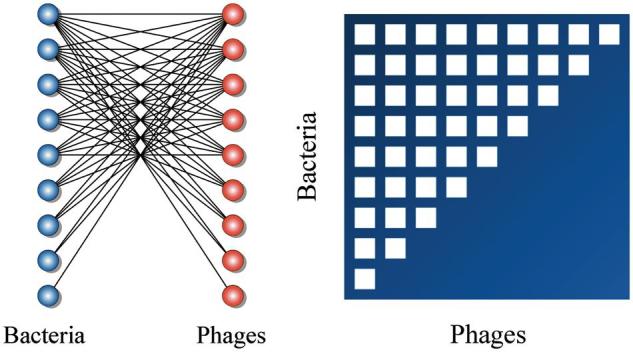Figure 1.

Many ecological networks are characterized by a pattern of nestedness. Our mathematical definitions of nestedness are derived from studies of bipartite networks (or two-mode) networks. A nested network displays a particular pattern of interactions that we can measure and detect. The left panel shows a bipartite network with two set of nodes. For example, one set corresponds to bacteria (blue balls) and the other corresponds to phages (red balls). Links represent interactions (infections) between pairs of dissimilar types. This bipartite network also accepts a matrix representation where rows and columns represent the two types of nodes and the entries of the matrix indicate the presence (white square) or absence (empty square) of pairwise interactions. The right panel shows an example of perfectly nested network, that is, the nonzero elements of each row in the matrix are a subset of the nonzero elements in the subsequent rows.
